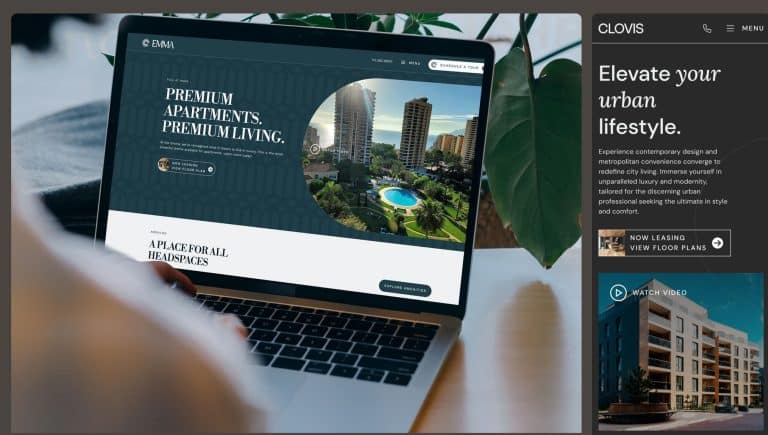Green Property Management: 9 Best Practices for Eco-Friendly Property Management
By following a specific list of eco-friendly building principles, you can earn the Credential for Green Property Management (CGPM).

How we treat the planet is something that we should all care about.
Living on Mars may be a possibility in the distant future, but for right now, Earth is all we’ve got.
And that means we have to do everything we can to make it a safe and healthy world to live in.
From the foods we eat to the cars we drive to the way we dispose of our garbage, there are all sorts of ways to reduce our impact on the environment. We can make some big changes right at home with some adjustments to how we live.
Environmentally conscious people are looking for ways to make life more sustainable. They pride themselves on their water and energy conservation and drain fewer resources from the planet. As a homeowner, you can make all sorts of upgrades and improvements to create a healthier, more eco-friendly home.
But for a renter, finding a “green” apartment can be a challenge.
Ready to learn how to make your investment property green in ways that can protect our future and attract eco-minded tenants?
Here are the nine best practices for eco-friendly property management.
What it Means to be Green
A property or marketing manager’s responsibilities go far deeper than you’d imagine. It’s more than advertising, collecting application fees, accepting security deposits, and leasing units. You’re also responsible for keeping your landlord informed of property upgrades and raising the rent.
If you can encourage your property owner to infuse some green building principles, you can do each of those things at once.
Creating a green apartment complex requires hard work and dedication.
You need to:
- Focus on energy-efficiency
- Take steps to ensure water conservation
- Guarantee that your property has good air quality
- Put sustainable practices in place, such as composting and recycling
- Maintain a clean property
By following a specific list of eco-friendly building principles, you can earn the Credential for Green Property Management (CGPM) offered by the National Affordable Housing Management Association and the National Apartment Association Education Institute.
You can learn more about the guidelines for this credential at the NAHMA website. While you’re working on earning that credential, there are other steps you can take on the path to becoming green.
Revamp your marketing to reflect your new eco-friendly stance. Learn more in our Step-by-Step Guide to Creating an Effective Apartment Marketing Plan.
1. Consider Installing Solar Panels

Property owners rarely jump at the chance to make major upgrades (and incur the expense of paying for those investments). But installing solar panels for energy efficiency is a great long-term investment that will pay off down the road.
Some states offer tax deductions and tax credits for installing solar panels on your property.
The federal government offers one as well, called the Federal Solar Tax Credit. For solar panel installation on a commercial building, you can deduct 10% of the costs from your federal taxes.
2. Minimize Energy Consumption in Common Areas
Minimizing energy consumption is key to creating and maintaining a green rental property. And there are a few simple things that property managers can do right now to use less energy throughout their complex.
Start by installing LED bulbs in all fixtures throughout all common areas. Consider upgrading your flooring to eco-friendly material, such as bamboo. It’s best if you can do this throughout your entire building.
But at the very least, do so in common areas.
You can also add structured outdoor spaces — such as covered patios and terraces — to cut the effects of extreme rain and heat. By minimizing heat and cold outside the building, your tenants can save energy and run their air conditioners and heaters less often.
3. Make Upgrades to Conserve Water
Water efficiency should be top of mind for every home and property owner, and the best way to conserve water is to install new toilets. Toilet flushes account for 30% of all household water usage.
If the toilets in your complex pre-date 1992, it’s time to replace them.
Toilets sold after 1992 meet the federal restrictions of 1.6 gallons of water usage per flush. But new EPA guidelines recommend toilets that use 1.28 gallons per flush (or less). With low-flush toilets installed throughout your building, you can use 20% less water than you would with a 1.6gpf model.
But toilets aren’t the only culprit when it comes to wasting water.
It’s time to invest in low-flow showerheads as well.
If you’re a Seinfeld fan, you remember that episode where the landlord put low-flow showerheads throughout Jerry’s building. And some really bad hair days followed.
Don’t worry — the low-flow showerheads of the 21st century are not like those from the 1990s. Low-flow no longer means low pressure.
It means water efficiency.
Installing a dishwasher in every apartment unit will also save on water consumption. An Energy Star rated dishwasher uses approximately three gallons of water per load. Washing one load of dishes by hand can use up to 27 gallons.
While you’re upgrading bathrooms and kitchens, consider water filtration systems for all faucets. This is a great way to improve the quality of water flowing into your building, no matter how much your tenants use.
4. Set Up an Effective Recycling System

There’s no excuse for not having an obvious, robust recycling program in your apartment complex.
If your property management company doesn’t already have one, put one in place NOW.
Provide your tenants with recycling bins in various drop-off locations around the property. Have clear designations that describe which bins are for trash and which ones are for recycling only.
You can also set up a system for composting food trash, leaves, and grass clippings.
If you have an eco-friendly building, you’re likely to attract environmentally conscious residents. And when “green” tenants know that you have a composting system in place, they’re more likely to contribute their own food waste to the effort.
5. Install Energy Efficient Appliances and HVAC Units
When you upgrade AC units, heating systems, or kitchen appliances in your rental units, make sure they’re Energy Star Certified. An Energy Star appliance can save 10%-50% energy compared to a similar, non-Energy Star device.
Thinking about installing new refrigerators?
This Energy Star calculator makes it easy to figure out how much a new fridge can save in energy compared to your old one. From HVAC units to washers and dryers, Energy Star appliances cut back on energy consumption, costs, and electricity bills.
Energy-efficient lighting fixtures can also save energy and lower utility bills. Replace overhead fixtures with energy-efficient models that use LED bulbs instead of incandescent.
6. Choose Zero VOC Paint
It’s important to make the apartment move-in ready between tenants, which usually includes giving it a fresh coat of paint. The next time you paint the inside or outside of your apartment, choose zero VOC paint that doesn’t contain volatile organic compounds.
VOCs irritate the human body and harm the local environment.
Hydrocarbons such as formaldehyde, toluene, and vinyl chloride all count as VOCs. They reduce indoor air quality. They also release particulates into the atmosphere that can cause smog, increase pollution, and affect the ozone.
Sherwin Williams, Behr, and other popular paint brands make a variety of zero VOC and low VOC paints that you can mix in any color.
See also: Your Detailed Apartment Make-Ready Checklist
7. Install a Programmable Thermostat
Whether you work for a real estate management company or work with one landlord, part of your job is to make sure that your renters are comfortable. And that means making sure they have heat when it’s cold outside and air conditioning when the weather is hot.
You can make your tenants more comfortable and encourage energy conservation by installing programmable thermostats throughout your complex.
A programmable thermostat lets you control a room’s temperature to an exact degree. It also allows renters to have better control over the air temperature when they’re not at home.
Those old manual thermostats can’t be set to a timer, which often means that heat or air run at full blast, even when no one is home.
Programmable thermostats help to conserve energy usage, reducing heating and AC bills.
8. Landscape With Native Plants

Professional landscaping is essential for curb appeal.
But with the right plants, it can also boost your eco-friendly factor.
When planting trees, shrubs, flowers, and bushes, be sure to choose plants natural to your region. Regional plants can thrive with minimal water, while those brought in from other regions may need more rain than your region can offer.
Hire a professional landscaper or arborist to inspect the surrounding areas of your apartment complex. Identify which plants are regional and which aren’t. Then, focus on landscaping with plants that don’t need constant watering or pesticides to grow.
The key to eco-friendly landscaping is to select plants that can adapt and survive in your existing environment.
Having natural local plants on your property has an added benefit as well — they can help feed the local wildlife!
9. Install New Windows
A great way to reduce heating bills and conserve energy is to pull back the blinds and let the sunshine in.
With bigger windows in your apartment units, your tenants may not have to turn the lights on as often as they do now.
New windows boast sturdy seals around each window casing, which helps to prevent air from getting in and escaping out. This is yet another opportunity to conserve energy usage from heating and air conditioning units.
When pricing new windows, don’t fall victim to sticker shock. New windows and window installation can be pricey, but it’s an investment in your property for the long term.
If installing new windows isn’t an option, weatherproof the ones you have. Caulk and seal around the window casing and window frames to ensure that heat and air aren’t seeping in or leaking out.
The Benefits of Green Property Management
Green property management benefits everyone.
Plus, it’s a great selling point that you can use to attract tenants who appreciate the planet.
It also feels good to know that you’re doing something good for the world. And that in itself is a great reason to start putting as many green practices as possible into place.
From a financial standpoint, turning your building green can save you money in the short term (on your taxes). But it can also cost less in the long term (through increased rents and savings on heat, energy, air, and water).
Tenants looking for an eco-friendly apartment are willing to pay more to reduce their carbon footprints.
Real estate is a tricky business. And you have to do everything possible to make your apartment the most desirable complex in the neighborhood. Turning your building into an eco-friendly, green living space is one way to do that.
There are several ways to convert your complex, from conserving water to planting natural trees. By creating a sustainable, eco-friendly complex, you can attract tenants with an environmentally conscious attitude.
You can also keep those tenants long-term.
To find the best tenants for your complex, LeaseLeads is the answer.
This integration matches prospective tenants with one of your units and makes it easy for them to schedule in-person or virtual tours. If you want earth-conscious tenants, LeaseLeads will connect you with them.
Schedule a demo to learn more about LeaseLeads today!






